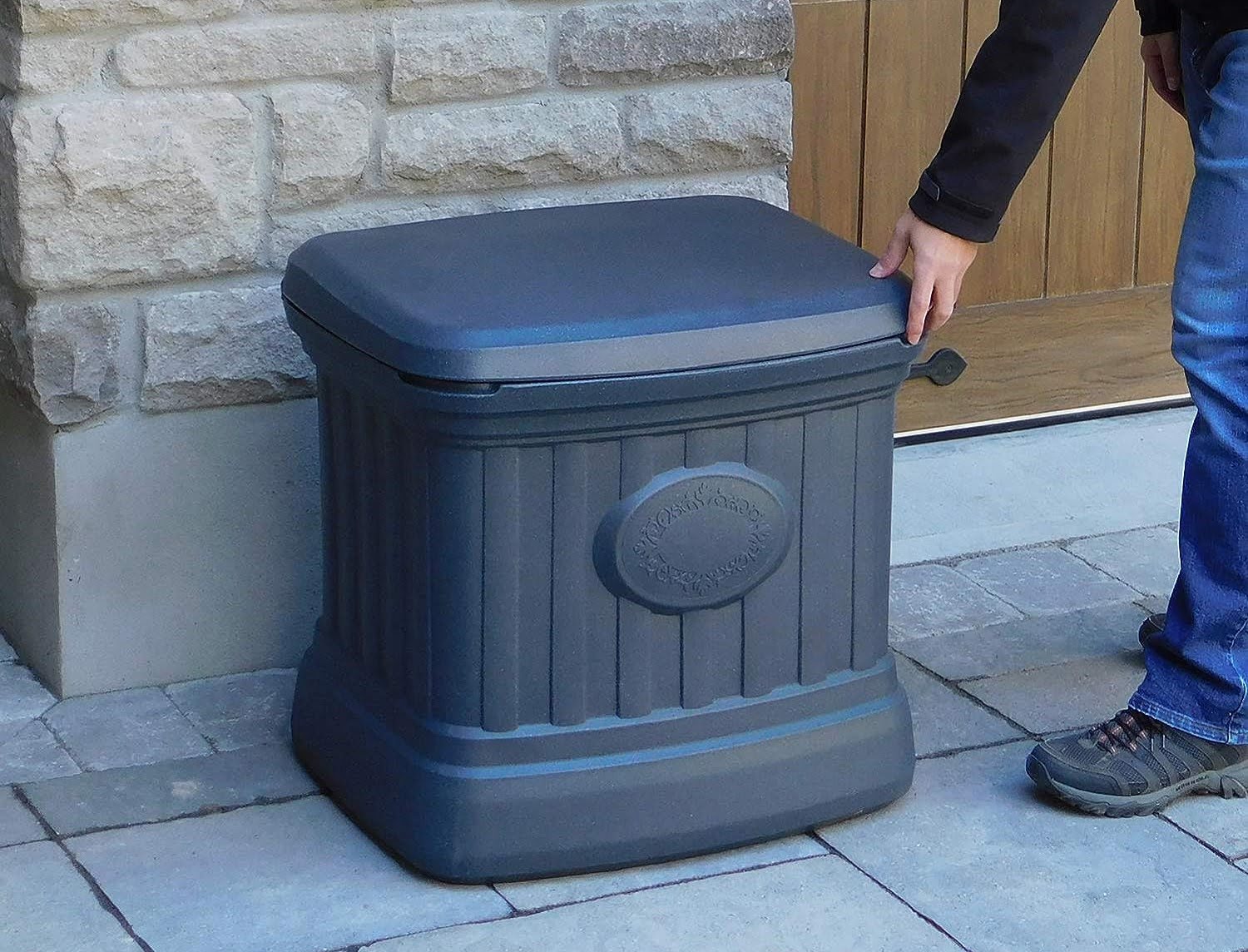

Articles
How To Store Ice Melt In Summer
Modified: February 26, 2024
Looking for articles on how to store ice melt in summer? Check out our helpful tips to keep your ice melt product in the best condition during the warmer months.
(Many of the links in this article redirect to a specific reviewed product. Your purchase of these products through affiliate links helps to generate commission for Storables.com, at no extra cost. Learn more)
Introduction
As the summer season approaches, many people shift their focus from clearing snow and ice to enjoying warmer weather. However, proper ice melt storage is still an essential consideration during these months. Whether you have leftover ice melt from the previous winter or you want to stock up for the upcoming season, it’s crucial to store it correctly to maintain its effectiveness and prevent any safety hazards.
Ice melt, also known as de-icer or snowmelt, is a product specifically designed to melt ice and snow. It is typically composed of various chemicals and salts that help to lower the freezing point of water, facilitating the melting process. Common ingredients found in ice melt include calcium chloride, magnesium chloride, sodium chloride, and potassium chloride.
In this article, we will discuss the importance of proper ice melt storage and provide you with practical tips on how to store ice melt during the summer months. By following these guidelines, you can ensure that your ice melt remains effective and ready to use when winter arrives.
Key Takeaways:
- Proper ice melt storage is crucial for maintaining effectiveness, safety, and shelf life. Choosing the right containers, ideal storage locations, and following safety guidelines are key to ensuring readiness for winter weather.
- Regular monitoring, proper handling, and disposal of expired ice melt are essential for safety and environmental protection. Following manufacturer instructions and adhering to local regulations contribute to effective and responsible ice melt usage.
Read more: How To Store Ice Melt
Why is proper ice melt storage important?
Proper ice melt storage is crucial for several reasons. Firstly, storing ice melt correctly helps to preserve its effectiveness. Ice melt products are designed to have a specific chemical composition and balance, which enables them to effectively melt ice and snow. If not stored properly, these chemicals can degrade or become contaminated, rendering the ice melt less effective or even completely ineffective.
Secondly, storing ice melt correctly ensures its safety. Ice melt products often contain chemicals that can be hazardous if mishandled or if they come into contact with certain surfaces or materials. By storing ice melt in the appropriate containers and following proper storage guidelines, you can reduce the risk of accidents and ensure the safety of yourself and others.
Furthermore, storing ice melt properly helps to extend its shelf life. Ice melt products can deteriorate over time due to exposure to moisture, extreme temperatures, and other environmental factors. By providing a suitable storage environment, you can help to preserve the quality and efficacy of the ice melt so that it remains usable for longer periods.
Lastly, proper ice melt storage allows for easy organization and accessibility. By having a designated storage area and keeping the ice melt containers properly labeled and organized, you can quickly locate and access the product when needed. This not only saves time and effort but also ensures that you can respond promptly to icy conditions or snowfall during the winter months.
In summary, proper ice melt storage is important for preserving the effectiveness, safety, and shelf life of the product, as well as for ensuring easy organization and accessibility. By taking the necessary steps to store ice melt correctly, you can make the most of your investment and be prepared for any winter weather that comes your way.
Choosing the right storage container
When it comes to storing ice melt, selecting the right storage container is essential to maintain its quality and safety. Here are some factors to consider when choosing a suitable container:
1. Material: Opt for containers made of durable materials such as plastic or metal. These materials are resistant to moisture and provide a protective barrier against any chemical reactions or leaks that could occur.
2. Size: Choose a container size that accommodates the amount of ice melt you plan to store. It’s important not to overcrowd the container, as this can lead to clumping and reduce its effectiveness.
3. Tight-sealing lid: Ensure that the storage container has a tight-sealing lid to prevent moisture and air from entering. This will help preserve the quality of the ice melt and prevent any potential leaks or spills.
4. Labeling: Consider using containers that allow for clear labeling. This will aid in identifying the contents and expiration date of the ice melt, promoting better organization and easy access when needed.
5. Stackability: If you have limited storage space, choose containers that are stackable. This will help maximize space and keep your storage area neat and organized.
6. Separate containers for different types: If you use different types of ice melt with varying chemical compositions, it’s advisable to store them separately in different containers. This prevents any potential chemical reactions that could occur when different ice melt products come into contact.
7. Consider environmental impact: Some ice melt products can have an environmental impact, particularly if they contain chemicals that are harmful to plants or animals. In such cases, opt for containers that are eco-friendly or biodegradable to minimize any potential harm.
Remember to thoroughly clean and dry containers before storing ice melt to prevent any contamination or moisture buildup. Additionally, consider storing smaller amounts of ice melt in more manageable containers for easier handling and distribution.
By choosing the right storage container for your ice melt, you can ensure its longevity, maintain its effectiveness, and promote safety during storage.
Finding the ideal storage location
Once you have selected the appropriate storage containers for your ice melt, the next step is to find an ideal storage location. Here are some factors to consider when determining the best place to store your ice melt:
1. Temperature: Ice melt is sensitive to temperature fluctuations. It is crucial to store it in a cool, dry place with a consistent temperature. Extreme temperatures, whether hot or cold, can affect the composition and effectiveness of the ice melt. Avoid storing it in areas that are exposed to direct sunlight, fluctuations in temperature, or excessive humidity.
2. Avoid moisture: Moisture can cause clumping and reduce the effectiveness of ice melt. Select a storage location that is dry and away from any potential sources of water or moisture, such as leaking pipes or damp areas.
3. Accessibility: Choose a storage location that is easily accessible, especially during winter when you might need to quickly access the ice melt to clear ice or snow. Consider a location near your driveway, entrance, or any other areas that are frequently affected by icy conditions.
4. Away from pets and children: Ensure that the storage location is secure and out of reach from pets and children. Ice melt products can be harmful if ingested or come into direct contact with skin. Keep them in a locked cabinet or high shelf to prevent accidental exposure.
5. Separation from other chemicals: Store ice melt away from other chemicals or substances that could potentially react with it. Some chemicals can produce harmful gases or reactions when combined. Keeping them separate reduces the risk of any accidental chemical reactions.
6. Consider ventilation: While it is important to keep the ice melt in a cool and dry location, ensure that there is proper ventilation to prevent any buildup of fumes or gases that may be released from the ice melt containers.
7. Comply with local regulations: Check if there are any specific regulations or guidelines regarding the storage of ice melt in your area. Some regions may have specific requirements or restrictions due to environmental concerns or safety regulations.
Remember to regularly inspect the storage location to ensure that there are no signs of damage or leaks. If any damage is detected, promptly transfer the ice melt to a new container to prevent any potential hazards.
By finding the ideal storage location for your ice melt, you can help preserve its effectiveness, maintain its quality, and ensure that it is readily available when needed.
Preparing the ice melt for storage
Before storing your ice melt, it is important to take a few steps to prepare it properly. These preparations not only help maintain the efficacy of the product but also ensure safe and hassle-free storage. Here are some tips to consider when preparing ice melt for storage:
1. Inspect for moisture: Check the ice melt containers for any signs of moisture or dampness. Moisture can cause clumping, reducing the effectiveness of the product. If you find any dampness, spread the ice melt out to dry completely before storing it.
2. Check for damage: Ensure that the ice melt bags or containers are not damaged or compromised. Leaks or punctures can lead to spills, contamination, and safety hazards. If you discover any damaged packaging, transfer the ice melt to a new, intact container.
3. Consolidate and remove debris: If you have multiple bags or containers of ice melt, consolidate them into a single, larger container to maximize space and facilitate easier storage. Before transferring the ice melt, remove any debris or foreign objects to prevent contamination.
4. Secure lids and seals: Double-check that the lids and seals on your ice melt containers are tightly closed and sealed to prevent any moisture or air from entering. This will help maintain the quality and effectiveness of the ice melt during storage.
5. Label containers: Clearly label each container with the type of ice melt, date of purchase, and expiration date. This information will help you keep track of the age of the product and ensure that you use the oldest stock first. It also aids in easy identification and organization when you need to locate specific types or batches.
6. Ensure proper ventilation: Ice melt products can release fumes or gases over time. For optimal safety, store containers in a well-ventilated area to prevent the buildup of potentially harmful gases.
7. Separate incompatible types: If you have different types of ice melt with incompatible chemical compositions, store them separately to reduce the risk of chemical reactions. Some chemicals can react when combined, leading to potential hazards or reduced effectiveness.
8. Take note of storage conditions: Make a note of the storage conditions for your ice melt, including the temperature, humidity, and accessibility of the storage area. This record will help you monitor and maintain the ideal storage conditions for the product.
By adequately preparing your ice melt for storage, you can ensure that it remains effective, safe, and readily usable when winter returns. These simple steps will help maximize the longevity and efficacy of the ice melt, saving you time and effort when it comes to clearing ice and snow.
Read more: How To Melt Ice On Driveway
Storing ice melt safely
Storing ice melt safely is crucial to prevent accidents and ensure the well-being of both humans and pets. Ice melt products contain chemicals that can be harmful if mishandled or ingested. Here are some guidelines to help you store ice melt safely:
1. Keep out of reach: Store ice melt in a location that is inaccessible to children and pets. Ensure that it is stored in a locked cabinet or on a high shelf to prevent accidental exposure or ingestion.
2. Avoid contact with skin and eyes: Always wear gloves and safety goggles when handling ice melt. The chemicals in ice melt can cause skin irritation and burns. In case of accidental contact, rinse the area with plenty of water and seek medical attention if necessary.
3. Prevent inhalation: Avoid inhaling the dust or fumes released by ice melt. Work in a well-ventilated area and consider wearing a mask or respirator to protect your airways.
4. Separate from food and drink: Store ice melt away from any food, beverages, or animal feed. Chemical contamination can occur if ice melt comes into contact with edible items, rendering them unsafe for consumption.
5. Secure containers: Ensure that ice melt containers are properly sealed and stored upright to prevent leaks or spills. This prevents accidental exposure and contamination of surrounding surfaces.
6. Store away from heat sources: Avoid storing ice melt near heat sources or open flames, as some chemicals in ice melt can be flammable. Store it in a cool, dry place away from any potential sources of ignition.
7. Don’t mix with other substances: Do not mix ice melt with other substances or chemicals unless specified by the manufacturer. Mixing chemicals can lead to dangerous reactions or reduced effectiveness of the ice melt.
8. Dispose of expired or damaged ice melt: Check the expiration date on ice melt containers and dispose of any expired or damaged products following the proper disposal guidelines in your area. Expired or damaged ice melt may not be effective or safe to use.
9. Keep emergency numbers handy: In case of accidental exposure, ingestion, or any emergencies related to ice melt, keep emergency contact numbers and Poison Control Center information readily available.
By following these safety guidelines, you can ensure the safe storage of ice melt and minimize any potential risks or accidents. Promoting a safe storage environment is essential for the well-being of your household and the surrounding environment.
Store ice melt in a cool, dry place away from direct sunlight and moisture. Keep it tightly sealed in its original container to prevent clumping and maintain its effectiveness.
Maintaining the quality of ice melt during storage
To ensure the effectiveness and longevity of your ice melt, it is important to take steps to maintain its quality during storage. Here are some tips to help you preserve the quality of your ice melt:
1. Store in a cool, dry place: High temperatures, humidity, and moisture can cause the ice melt to clump or degrade. Choose a storage location that remains consistently cool and dry throughout the year. Avoid areas that are exposed to direct sunlight or fluctuating temperatures like garages or sheds.
2. Keep away from moisture: Moisture can affect the quality and effectiveness of ice melt. Store it in airtight containers or bags to prevent exposure to humidity or moisture. If you notice any moisture inside the container, spread the ice melt out to dry before returning it to storage.
3. Prevent cross-contamination: Store different types of ice melt separately to avoid cross-contamination. Mixing different ice melt products can alter their chemical composition or efficacy. Store each type in its own clearly labeled container to avoid confusion and maintain the intended performance.
4. Avoid exposure to air: For optimal longevity, minimize exposure to air. Ensure that containers have tight-fitting lids or resealable bags, and seal them properly after each use. This will prevent the ice melt from absorbing moisture from the surrounding air.
5. Maintain proper ventilation: While it is crucial to keep moisture out, proper ventilation is still essential. Good airflow helps prevent the buildup of gases that may be emitted by the ice melt products, ensuring a safe storage environment.
6. Regular inspections: Periodically inspect the containers to ensure they are in good condition and free from leaks or damage. Check for any signs of clumping, discoloration, or unusual odors, as these may indicate a problem with the ice melt’s quality.
7. Rotate stock: Use a “first in, first out” system to ensure you use the oldest ice melt stock first. This helps prevent ice melt from sitting in storage for extended periods, reducing the chances of degradation over time.
8. Proper handling: When accessing and using ice melt from storage, be careful not to contaminate it. Avoid touching the ice melt directly with bare hands, as oils and dirt can affect its quality. Use gloves or a scoop to handle the product.
9. Keep away from vegetation: Avoid storing ice melt near plants or grass, as the chemicals in ice melt can be harmful to vegetation. If any spills occur during storage, clean them up promptly to prevent damage to surrounding foliage.
10. Observe expiration dates: Ice melt can lose effectiveness over time, so be mindful of the expiration dates on the packaging. Dispose of any expired ice melt and replace it with fresh stock to ensure optimal performance.
By following these guidelines, you can maintain the quality and effectiveness of your ice melt, ensuring it is ready to use when needed and providing the best results in safely clearing ice and snow.
Monitoring storage conditions
Monitoring the storage conditions of your ice melt is crucial to ensure its effectiveness and quality over time. By regularly assessing and maintaining the storage environment, you can prolong the shelf life and performance of the ice melt. Here are some key aspects to consider when monitoring the storage conditions:
1. Temperature: Keep a close eye on the temperature inside the storage area. Ice melt should be stored in a cool, consistent temperature environment. Exposure to extreme heat or cold can degrade the quality and effectiveness of the product. Aim for a temperature range between 32°F (0°C) and 70°F (21°C).
2. Humidity and moisture: Regularly check the storage area for any signs of moisture or humidity. Excessive humidity can cause the ice melt to clump or become less effective. If moisture is detected, take steps to eliminate it, such as using moisture-absorbing materials or improving ventilation.
3. Inspect containers: Periodically inspect the containers for any damage, leaks, or signs of deterioration. If you notice any cracks, punctures, or compromised seals, transfer the ice melt to a new container to maintain its quality and prevent spills or contamination.
4. Air circulation: Ensure that there is proper air circulation in the storage area. Good ventilation helps prevent the accumulation of gases and fumes that may be released by the ice melt. If the storage area is lacking adequate airflow, consider using fans or opening windows for ventilation.
5. Labeling and organization: Keep the containers properly labeled and organized. Clear labeling enables easy identification of the type of ice melt and its expiration date, allowing you to use the oldest stock first. Organize the containers in a neat and accessible manner to prevent any mishaps or accidents.
6. Regular rotation: Rotate the ice melt stock periodically to ensure that the oldest containers are used first. This practice helps prevent the ice melt from sitting in storage for extended periods, reducing the risk of degradation and ensuring you utilize the freshest product when needed.
7. Record-keeping: Maintain a record of storage conditions, including temperature, humidity levels, and any abnormalities noticed during inspections. This record can help you identify patterns or issues that may arise over time, allowing you to make necessary adjustments for optimal ice melt storage.
8. Follow manufacturer guidelines: Refer to the manufacturer’s recommendations for storage conditions and shelf life. Each type of ice melt may have specific guidelines, and adhering to them ensures that you are storing the product in the best possible way.
By monitoring the storage conditions of your ice melt, you can catch any issues early on, prevent quality degradation, and have peace of mind knowing that your ice melt will perform effectively when needed. Regular assessments and adjustments help maintain the product’s integrity and ensure it is ready to tackle icy conditions.
Tips for organizing and labeling stored ice melt
Proper organization and labeling of stored ice melt are essential for easy access, inventory management, and ensuring the safety and effectiveness of the product. Here are some tips to help you organize and label your stored ice melt:
1. Categorize the ice melt: Group similar types of ice melt together based on their chemical composition or intended use. This categorization makes it easier to locate the specific type of ice melt you need when the time comes.
2. Use clear storage containers: Transparent storage containers allow you to see the contents at a glance, making it easier to identify the type of ice melt and monitor its quantity.
3. Create a labeling system: Develop a labeling system that works for you, ensuring all containers are clearly labeled with the type of ice melt, brand, and any specific instructions or warnings. Consider using waterproof labels or tags that won’t easily fade or smudge over time.
4. Include expiration dates: Note the expiration dates on the labels to help you identify and use older stock first. This ensures that you are using the ice melt before it becomes less effective or unsafe.
5. Label reusable containers: If you transfer ice melt into reusable containers, make sure to label them accordingly. Include all necessary information such as the type of ice melt, expiration date, and any specific instructions or precautions.
6. Create an inventory list: Keep an inventory list that includes the quantity and location of each type of ice melt stored. This helps you keep track of your stock levels, identify any gaps, and plan for restocking when necessary.
7. Organize by usage: If you use different ice melt products for different areas or purposes, consider organizing your storage based on their specific use cases. For example, group ice melt for walkways separately from ice melt for driveways or parking areas.
8. Accessibility and safety: Store frequently used ice melt in easily accessible locations, ensuring they are within reach during icy conditions. For safety purposes, keep containers of ice melt away from potential hazards or obstructions.
9. Store smaller quantities: Consider dividing large containers of ice melt into smaller portions for easier handling and distribution. This ensures that you have the appropriate amount for each application without wasting excess product.
10. Regularly review and update labels: Periodically check your stored ice melt containers to ensure that the labels remain legible and accurate. If any containers are no longer labeled or if labels have become illegible, reapply the necessary information to maintain clarity and safety.
By implementing these organization and labeling tips, you can efficiently manage your ice melt inventory, quickly locate the type you need, and better track product expiration dates. These practices contribute to maintaining the safety, effectiveness, and longevity of your ice melt supply.
Read more: How To Melt Ice On Composite Decking
Handling and disposing of expired ice melt
Expired ice melt loses its effectiveness and may not be safe to use. Proper handling and disposal of expired ice melt are important to ensure the safety of individuals and the environment. Here are some guidelines to follow when dealing with expired ice melt:
1. Check the expiration date: Regularly inspect your stored ice melt containers, and take note of the expiration dates. Expired ice melt may not melt ice or snow effectively or may have undergone chemical changes that render it unsafe for use.
2. Segregate expired ice melt: Separate expired ice melt from the rest of your inventory. Keep it in a clearly labeled container or bag to avoid confusion and accidental use.
3. Assess effectiveness: If you’re uncertain about the efficacy of ice melt nearing its expiration date, perform a small test in a controlled area to ensure it still functions as intended. If the ice melt doesn’t perform adequately, consider it expired and proceed with proper disposal.
4. Do not mix with fresh ice melt: Avoid mixing expired ice melt with fresh stock. Mixing different batches of ice melt, especially expired ones, can compromise the overall performance and effectiveness of the product.
5. Follow local regulations: Check local regulations and guidelines for the proper disposal of expired ice melt. Some areas have specific guidelines for the disposal of chemicals or hazardous substances. Follow these guidelines to prevent any harm to the environment or risk of contamination.
6. Dispose of as non-hazardous waste: If there are no specific guidelines for the disposal of ice melt in your area, consider treating it as non-hazardous waste. Seal the expired ice melt in a sturdy bag or container to prevent leakage or spills during disposal.
7. Disposal methods: Most expired ice melt can be safely disposed of in regular trash bins for municipal waste collection. Make sure to secure the bag or container to prevent accidental spills or exposure.
8. Recycle the container: If the ice melt container is recyclable, rinse it thoroughly to remove any residue and recycle it in accordance with local recycling guidelines. Check if there are specific instructions regarding containers that held chemicals.
9. Consult disposal services: For large quantities of expired ice melt, consider consulting with specialized disposal services in your area. They can provide guidance on proper disposal methods and ensure compliance with local regulations.
10. Document the disposal: Keep a record of the disposal process, including dates and methods used, for reference and future inventory management.
By handling and disposing of expired ice melt properly, you can ensure the safety of individuals and the environment. Always prioritize safety and adhere to local guidelines when managing expired ice melt to minimize any potential risks associated with its use or disposal.
Proper handling and usage of stored ice melt
Proper handling and usage of stored ice melt are crucial to ensure its effectiveness, safety, and minimize any potential hazards. Here are some tips to help you handle and use stored ice melt correctly:
1. Wear protective gear: When handling ice melt, always wear protective gloves, safety goggles, and appropriate footwear. This protects your skin, eyes, and feet from any potential irritation or burns caused by the chemicals in the ice melt.
2. Read and follow instructions: Familiarize yourself with the instructions provided by the manufacturer on the ice melt packaging. Different ice melt products may have specific application rates, spreading guidelines, or recommended temperatures for optimal performance. Adhere to these instructions for best results.
3. Apply the right amount: Use the recommended amount of ice melt according to the instructions or guidelines. Avoid overapplication, as excessive amounts of ice melt can be wasteful and potentially harmful to the environment.
4. Avoid contact with vegetation: Take care to prevent ice melt from coming into direct contact with plants, shrubs, or grass, as some chemicals in ice melt can be harmful to vegetation. If any spillage occurs, promptly clean it up and prevent direct runoff onto vegetation.
5. Apply before ice formation: Use ice melt as a preventive measure by applying it before snow or ice accumulation. This helps to inhibit bonding between ice and surfaces, making it easier to remove the ice with minimal effort.
6. Distribute evenly: Apply ice melt evenly across the surface you wish to treat. Use a spreader or a shovel to ensure a uniform distribution and avoid clumps or concentrated areas that can lead to uneven melting or potential damage to surfaces.
7. Do not use on sensitive surfaces: Avoid using ice melt on sensitive surfaces such as colored concrete, brick pavers, or certain types of metals. These surfaces can be susceptible to discoloration or corrosion, so opt for alternative de-icing methods if needed.
8. Store unused ice melt properly: After use, ensure that any unused ice melt is returned to its appropriate storage container, sealed tightly, and stored in the designated storage location. This preserves its quality and minimizes the risk of spills or accidental exposure.
9. Clean up excess: If any ice melt accumulates after the ice has melted, sweep or shovel away any excess granules. This prevents tracking the ice melt indoors and helps minimize chemical buildup on surfaces.
10. Maintain good ventilation: When using ice melt indoors, ensure that the area is well-ventilated to prevent the buildup of any gases or fumes that may be emitted by the chemicals in the ice melt.
By following these proper handling and usage tips, you can maximize the effectiveness of ice melt while minimizing any potential risks or negative impacts. Prioritize safety, follow manufacturer instructions, and consider alternative de-icing methods when necessary to ensure a safe and effective ice melting process.
Conclusion
Proper storage and handling of ice melt are essential for maintaining its effectiveness, safety, and longevity. By following the guidelines outlined in this article, you can ensure that your ice melt remains in optimal condition, ready to tackle icy conditions whenever they arise.
From choosing the right storage containers and finding the ideal storage location to preparing the ice melt for storage and organizing it properly, these steps help you create a system that promotes easy access and ensures the safety of your household and the environment.
Monitoring the storage conditions, maintaining the quality of the ice melt, and regularly inspecting for any expired product are vital practices that allow you to keep a well-managed inventory. By adhering to proper handling and usage techniques, you can use ice melt effectively and responsibly, minimizing environmental impact and maximizing safety.
Remember to follow manufacturer instructions, wear appropriate safety gear, and dispose of any expired ice melt in accordance with local regulations. By doing so, you contribute to a safer environment and help preserve the effectiveness of the product for future use.
Properly stored and handled ice melt enables you to confidently tackle icy conditions, making your surroundings safer and more accessible during winter. Stay proactive, stay organized, and prioritize the safety of yourself and those around you. With these practices in place, you can be well-prepared for any winter weather that comes your way.
Frequently Asked Questions about How To Store Ice Melt In Summer
Was this page helpful?
At Storables.com, we guarantee accurate and reliable information. Our content, validated by Expert Board Contributors, is crafted following stringent Editorial Policies. We're committed to providing you with well-researched, expert-backed insights for all your informational needs.

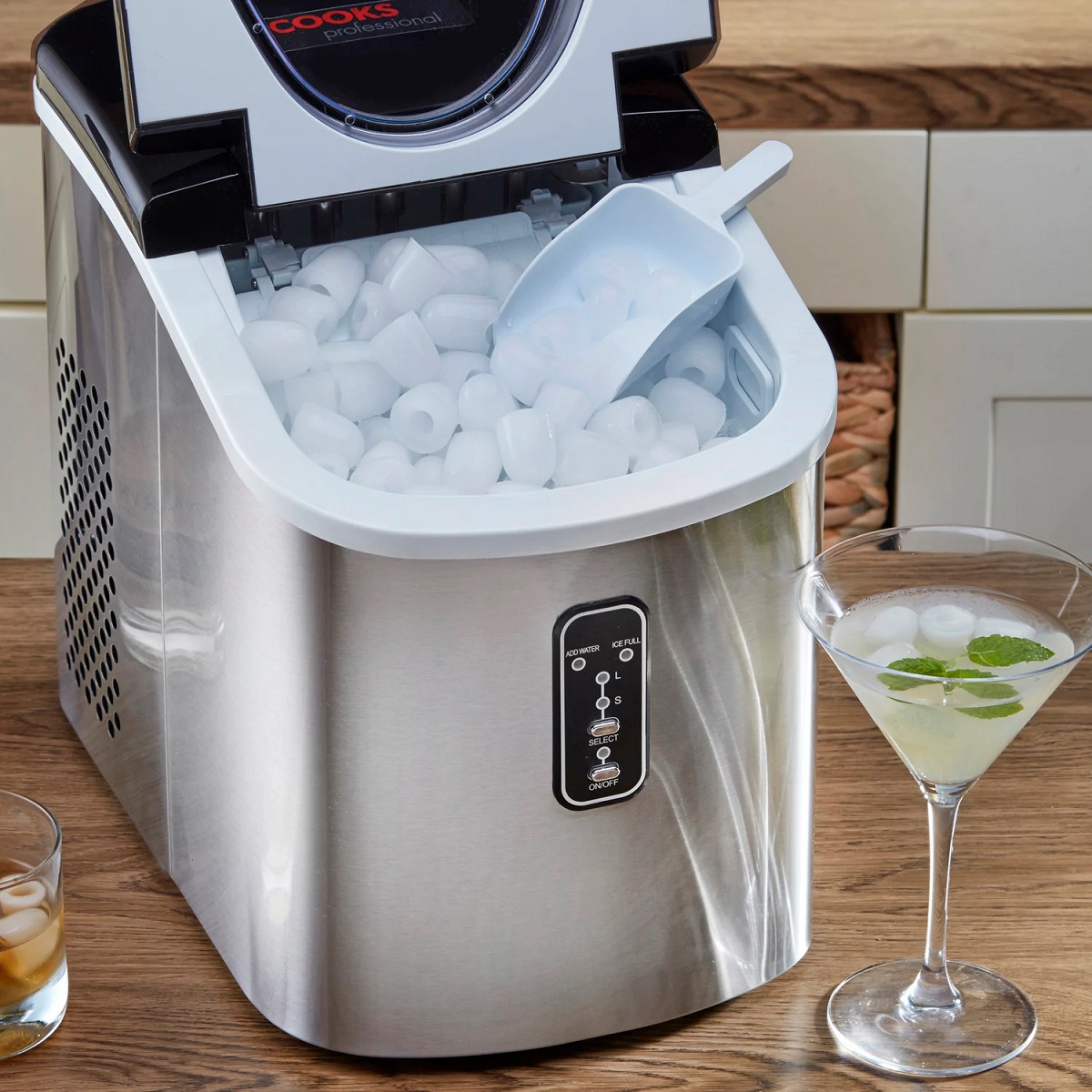

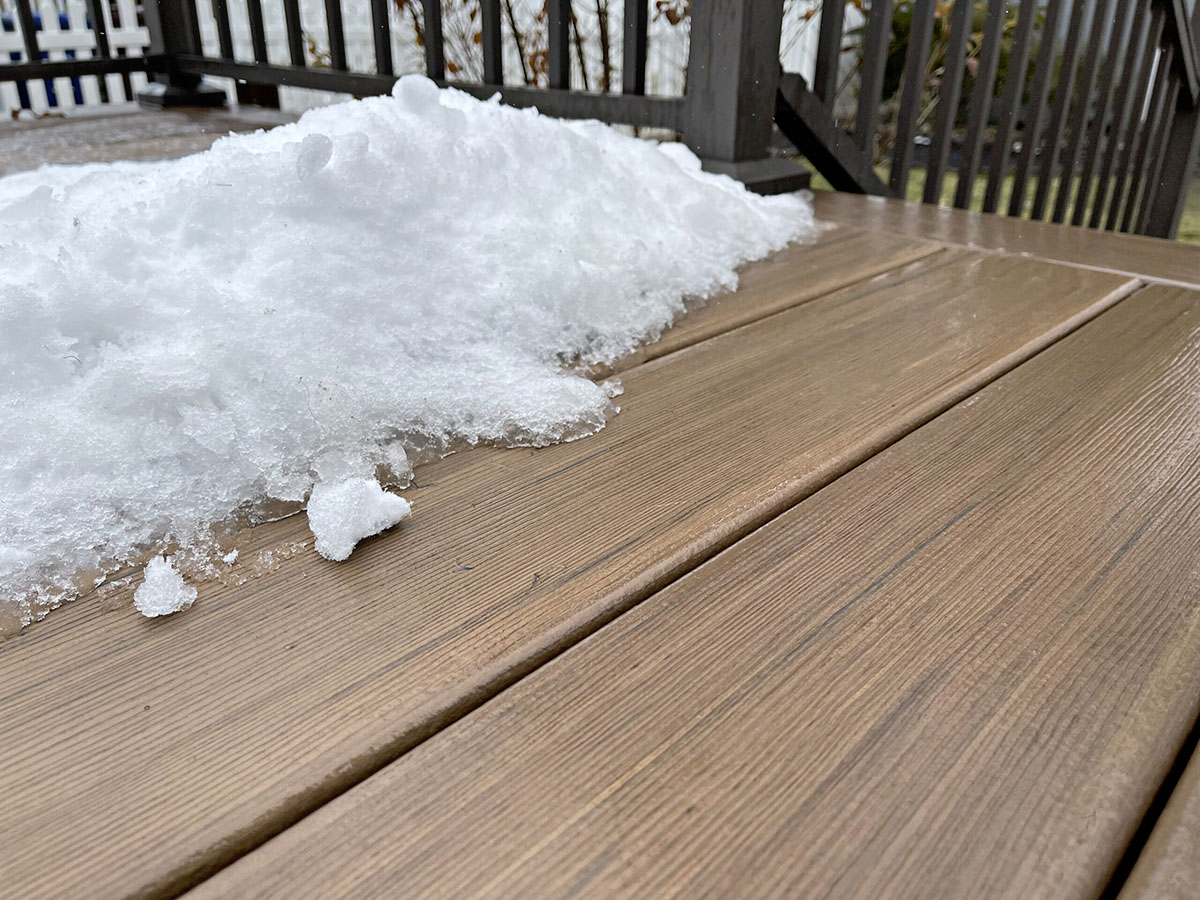



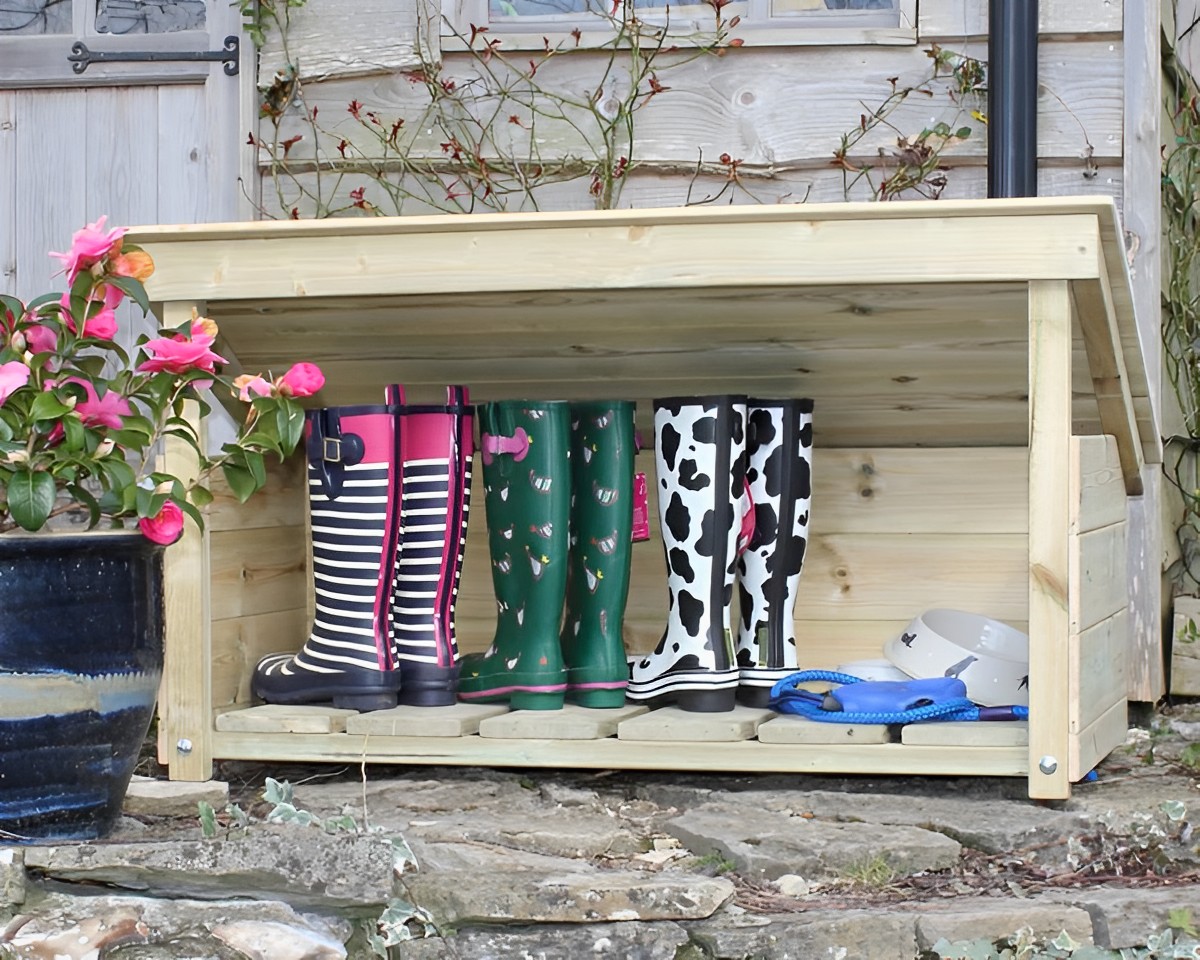




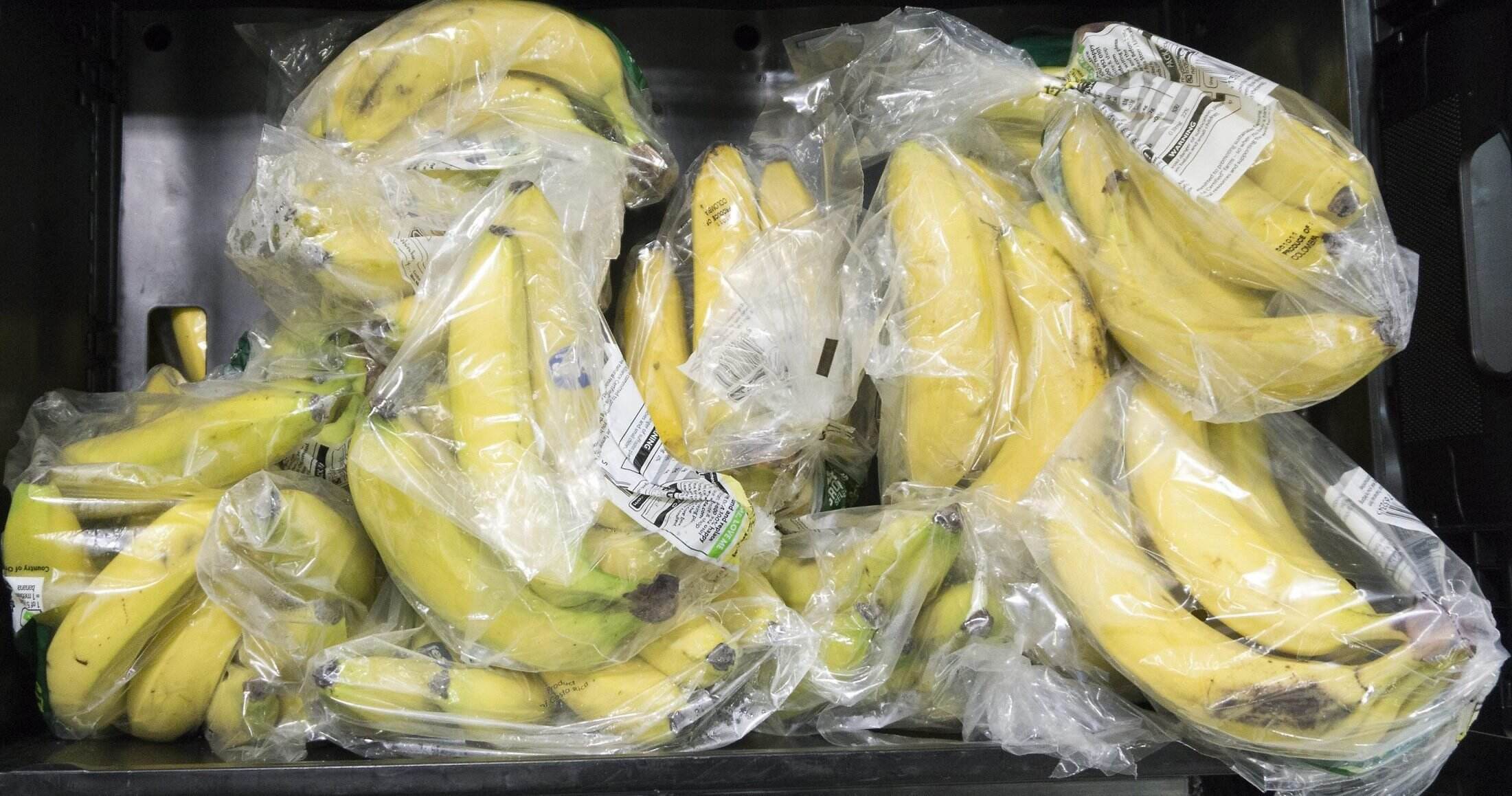

0 thoughts on “How To Store Ice Melt In Summer”